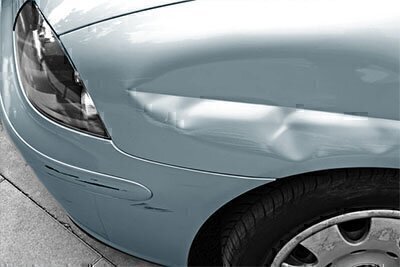Last updated February 2018
You just landed, happy to start your vacation or anxious to make it on time to a meeting, and head over to claim your rental car. But before you’re assigned your ride, you must face THE QUESTIONS about insurance coverage.
As with your own car, you want to make sure you have adequate insurance coverage for damage to the rental car, for damage to the property of others, and for liability lawsuits in case you have an accident. So it’s worth understanding what coverage you have and what you need to add on before you pick up a rental.
Unfortunately, though, you can’t count on receiving useful advice from the representative or even the rental car company’s website; instead, you’re likely to just get a sales pitch. And the coverages rental companies sell aren’t cheap. For example, for a compact car rental from Budget, our shoppers recently were quoted a base price of $45 per day (plus tax and the usual jumble of fees). Adding Loss Damage Waiver coverage would cost an extra $28.99 per day. For another $16.25 a day, we could add Supplemental Liability Insurance coverage. Finally, if we added Personal Accidents and Effects coverage, we’d pay an extra $9.95 a day. For “full coverage,” our total daily rate was $100.19—more than double the base rental rate.
 Should you spring for this stuff? If you own and insure your own car, your personal policy likely protects you against big losses you might incur when renting, so the quick answer is “probably not.” But we detail below some important exceptions and caveats. And if you don’t own a car, there are even more issues to consider.
Should you spring for this stuff? If you own and insure your own car, your personal policy likely protects you against big losses you might incur when renting, so the quick answer is “probably not.” But we detail below some important exceptions and caveats. And if you don’t own a car, there are even more issues to consider.
When renting a car, consider three risks to insure against:
- Damage to the car (physical damage coverage);
- Injuries to others or damage to other people’s property (liability coverage); and,
- The rental-car company’s loss-of-revenue while the car is repaired (loss of use coverage).
For the first two types of risks, most drivers already have sufficient coverage from a mixture of benefits on their personal auto policies, free perks from their credit card companies, and the insurance rental car companies are required to carry to register their cars. Although few of us carry loss-of-use coverage, as discussed below, most renters don’t need it.
Coverage You May Already Have
Here’s a rundown of the insurance protection you may already have:
Under a Personal Insurance Policy
If you’re covered as a driver under your family’s personal auto insurance policy, and that policy includes collision and comprehensive coverage, it will pay claims for physical damage to cars you rent, and you will pay your policy’s deductible.
Similarly, the liability coverage offered by your personal auto policy covers you when you rent a car.
But your personal auto insurance policy provides no protection for car rentals outside of the U.S. and Canada. It will be useless in other countries. And your coverage for rental cars is available only for short-term rentals.
If you are an employee driving a rental car on company business, your employer’s auto insurance policy might provide coverage—but only if your employer has paid extra for it. Also, these policies usually cover only liability, not physical damage.
Automatic with the Rental
 While the rental car companies themselves have to buy liability insurance to register their cars, most companies get only enough coverage to meet the required local legal minimum, which is often a low limit.
While the rental car companies themselves have to buy liability insurance to register their cars, most companies get only enough coverage to meet the required local legal minimum, which is often a low limit.
Although your personal auto policy won’t cover you when driving abroad, the automatic coverage in some countries is very high. For example, Hertz automatically includes coverage up to €1 million per person for rentals in Italy, and rentals in Spain automatically include unlimited liability coverage. But, as you might expect, the limits in many other foreign countries are far lower—for example, less than $2,000 per injured person in Thailand and $20,000 per accident in Nicaragua. The moral, as usual: Check what you get before you pay for extra insurance.
From Your Credit Card Company
If you rent a vehicle using a credit card (as most renters do), you likely get free physical damage coverage—but not liability coverage—as a free perk from your credit card company. This coverage is standard on all American Express, MasterCard, and Visa cards. (Discover recently dropped its coverage perk.) But keep in mind:
- You get this protection only if you use the card for every phase of the transaction—to pay for the rental, for any deposit, and, with some credit cards, to reserve the vehicle.
- You must rent the car in your name (rather than pay for someone else’s rental).
- You must decline the rental company’s physical damage coverage.
- Coverage does not apply in certain countries. For example, Visa does not extend coverage for rentals in Ireland, Israel, Jamaica, and Northern Ireland.
- Coverage does not apply to certain types of vehicles. It usually excludes RVs, vehicles designed to carry more than eight or nine passengers, vehicles with fewer than four wheels, and trucks (even small pickup trucks with extended cabs designed to carry four or five passengers).
- Losses that occur while the vehicle is used in a way that violates the rental agreement are not covered.
- Coverage is typically limited to rentals that last no more than 15 days in the U.S. or no more than 31 days in foreign countries. You can’t avoid these limits by returning the car and renting it again.
- Losses due to off-road driving are not covered, including when driving on any surface other than a bound surface, such as concrete or tarmac—a possible problem if you take a rented SUV over dirt roads to reach your campsite.
- Coverage may be limited to a maximum amount—say, $25,000.
- Certain kinds of losses (theft, vandalism) may be excluded.
Evaluating the Coverage Offered by the Rental Companies
If you’re still considering buying extra insurance protection from a rental car company, it’s important to understand that the coverage is secondary insurance. This means that if you have an accident that your personal auto policy covers—which includes most accidents that occur in the U.S.—before you can collect from the rental company’s insurance you first have to file a claim with your own insurer. In other words, the extra insurance you bought from the rental car company for physical damage or liability really covers only your deductible.
Also, when considering plans find out exactly what you get, especially when renting abroad. In Nicaragua with Hertz, for example, paying $8 per day for supplemental liability coverage barely raises coverage limits above the automatic minimums—from $20,000 to $25,000 per person, $40,000 to $45,000 per accident, and $20,000 to $25,000 for property damage.
Unfortunately, it is very difficult to get details on insurance coverage rental companies automatically provide and what you get by paying extra. Most company websites provide very few, if any, details, simply providing brief descriptions of available coverage and instruct you to inquire at the rental counter for details and pricing.
The Loss-of-Use Gap
 Neither your personal auto insurance policy nor your credit card company’s insurance perks cover “loss-of-use” charges rental car companies increasingly enforce. Essentially, when rental companies blame their customers for damage to their cars, they make them liable not only for the cost of repairs, but for the theoretical rentals the company can’t make while the vehicles are out of commission. These penalties are usually excessive. For example, even though you rent a car for $19/day, a rental company might charge you an undiscounted $45/day “rack rate” for the number of days it takes to repair it—even though the company rarely charges that full rate and even though it might not bother to repair the car.
Neither your personal auto insurance policy nor your credit card company’s insurance perks cover “loss-of-use” charges rental car companies increasingly enforce. Essentially, when rental companies blame their customers for damage to their cars, they make them liable not only for the cost of repairs, but for the theoretical rentals the company can’t make while the vehicles are out of commission. These penalties are usually excessive. For example, even though you rent a car for $19/day, a rental company might charge you an undiscounted $45/day “rack rate” for the number of days it takes to repair it—even though the company rarely charges that full rate and even though it might not bother to repair the car.
Although the physical damage coverage you can buy from rental car companies covers loss-of-use penalties, we advise most drivers decline it. To us, paying an extra $20–$40 per day to cover the unlikely risk of losing $40–$100 per day for loss-of-use fees just doesn’t add up.
If You Don’t Have a Personal Auto Policy or Want Extra Insurance, Buy Coverage from a Third Party
Companies like Allianz (allianztravelinsurance.com), Bonzah.com, and RentalCover.com offer options that are primary insurance policies for rentals (if you have an accident, you don’t have to file a claim with your personal auto insurance company). If you don’t own a car, it’s worth considering one of these plans, rather than paying what are usually higher rates offered by the rental companies. But note that these policies don’t include liability or loss-of-use coverage.
If you don’t own a car, you can also buy a “non-owners” auto insurance policy for rentals, which offers the same coverage types and limits that you’d get if you owned and insured a car. Because these policies aren’t cheap, buying one makes sense only if you rent often.
If you’re an American Express cardholder, it’s worth considering enrolling in its “Premium Car Rental” program. For a flat fee of $24.95 for each rental you charge to your card, you get primary insurance that covers:
- Up to $100,000 of primary damage and theft coverage for the rental car.
- Up to $100,000 of accidental death and dismemberment coverage.
- Up to $15,000 per person for excess medical expenses.
- Up to $5,000 per person for excess personal property damage, with a maximum of $10,000.
American Express also offers a $19.95 per rental option that provides somewhat lower coverage limits.
Apart from providing primary insurance, the American Express program is a better deal than what the rental companies offer in that you pay a (fairly low) flat fee for each rental (for up to 30–42 consecutive days, depending on the state). The rental companies typically charge $30 or more per day. So while the American Express fee for a one-day rental is not only less than what most rental companies offer, it’s a screaming deal for longer durations.
Keep in mind that while there is no fee to enroll in the program, once enrolled, you’ll automatically pay for the coverage whenever you rent. (You can, of course, avoid the fee by using a different credit card to rent.)
Avoid Bogus Damage Claims
 Checkbook’s editor recently experienced a common scenario: When returning a rental car, the company tried to charge him for damage that already existed when he picked up the car.
Checkbook’s editor recently experienced a common scenario: When returning a rental car, the company tried to charge him for damage that already existed when he picked up the car.
While it’s impossible to completely insulate yourself from this problem, there are steps you can take:
- Inspect your car carefully when you pick up. Walk around it look for scratches and dents. Check especially the front air dam and rear bumper, which are frequently scratched or dented. Also inspect the interior.
- If you find any damage, point it out to a rental company agent and document it with a pic. Even if he or she tells you the damage is too minor, insist that it is documented.
- Ask how you can check on the documentation. If there’s a paper form to fill out or a field in software, review what they record to make sure it’s accurate and thorough.
- If you are charged for damage you didn’t cause, ask the company to prove it with time-stamped photos. Ask for a record of rentals after you dropped off the car—if other rentals occurred, it’s possible another renter or the company itself caused the damage. Provide any proof you have (photos, inspection notes) that you didn’t cause the damage.
- If the company is unresponsive, dispute the charges with your credit card company.

